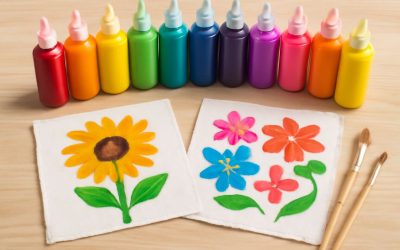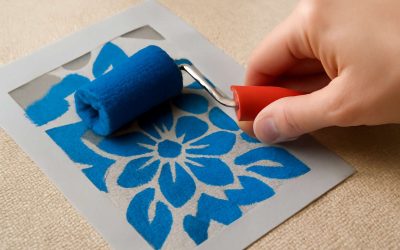If you are a painter or just want to try a new medium, fabric painting for clothes can be a great way to create beautiful works of art. But before you dive into creating a masterpiece, it is best to take the time to practice on some scraps first. This can help you get a better understanding of how the paints work and how to control them, as well as what kinds of effects you can achieve.
Fabric paint is a water-based paint that is safe to use on most fabrics. However, you will need to follow the directions on the fabric paint bottle for specific tips and instructions. Generally, you will need to pre-wash the fabric (without any fabric softeners) to eliminate surface chemicals and starches that can interfere with the absorbent qualities of the cloth. You will also need to dry and iron it so that the fabric is ready to be painted.
There are a few different types of fabric paints available, each with its own advantages and disadvantages. For example, some fabric paints are formulated to be permanent, meaning they won’t fade or peel over time. Others are semi-permanent, which means they may fade slightly over time but won’t completely wash away. The type of fabric you are using will also determine which kind of paint is the right one for you. Some fabric paints are textured, like puffy paint or acrylic 3D paint, and these can add an extra dimension to your work.
In addition to traditional paints, there are also a number of other tools and techniques that you can use with fabric paints to achieve various effects. Some of these include free-painting, stenciling, blocking and stamping, and spray painting. Depending on what you are painting, you may also want to consider using tools such as rubber stamps, towels for texture, finger-painting, or palette knives.
Before you begin your work, it is a good idea to lay down some newspaper or thick paper underneath the fabric you are working on to prevent bleed through. This is especially important if you are painting two-layer garments, such as a t-shirt or tote bag. You can also use cardboard to back the fabric to prevent paint from leaking onto the other side while you are working on it.
You will also need to make sure you have a safe place to work, as fabric paint is a messy job. If you don’t have a dedicated area, consider covering the work space with plastic or tarp to protect the surrounding surfaces from accidental spills and stains.
If you do accidentally mess up your work, bleach is usually the best eraser for fabric paint, but it is not a guarantee that it will remove all the paint. Bleach is a strong chemical and can permanently damage your fabric, so it’s always best to test a small amount of bleach on a portion of your fabric before attempting to clean a large area.



0 Comments